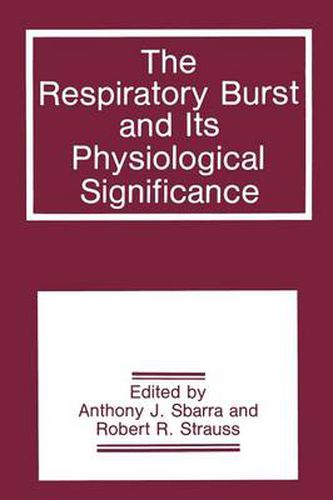Readings Newsletter
Become a Readings Member to make your shopping experience even easier.
Sign in or sign up for free!
You’re not far away from qualifying for FREE standard shipping within Australia
You’ve qualified for FREE standard shipping within Australia
The cart is loading…






This title is printed to order. This book may have been self-published. If so, we cannot guarantee the quality of the content. In the main most books will have gone through the editing process however some may not. We therefore suggest that you be aware of this before ordering this book. If in doubt check either the author or publisher’s details as we are unable to accept any returns unless they are faulty. Please contact us if you have any questions.
When phagocytes are exposed to a number of different stimuli, they undergo dra matic changes in the way they process oxygen. Oxygen uptake increases markedly, frequently more than 50-fold; the phagocytes begin to produce large quantities of superoxide and hydrogen peroxide; and they immediately begin to metabolize large amounts of glucose by way of the hexose monophosphate shunt. This series of changes has become known as the respiratory burst. It was first believed that the major function of this respiratory burst was to generate powerful antibacterial agents by the partial reduction of oxygen. It is becoming apparent that the respiratory burst has much wider application, and its physiological function in many different biolog ical areas is clear. In this volume, we have attempted to bring together the work of experts who have published extensively on the involvement of the respiratory burst in different physiological functions. In the first three chapters, Dr. Borregaard and Dr. Berton and co-workers and Dr. Roos and co-workers bring together what is known about the respiratory burst. They present up-to-date versions of the biochemical and metabolic activities associ ated with the burst. In Chapter 4, Dr. Styrt and Dr. Klempner discuss the respiratory burst as it affects cellular ion homeostasis. Dr. Cohen and Dr. Britigan (Chapter 5) present some interesting data on the competition between the respiratory burst and bacteria for oxygen. Dr. Dobrina and Dr.
$9.00 standard shipping within Australia
FREE standard shipping within Australia for orders over $100.00
Express & International shipping calculated at checkout
This title is printed to order. This book may have been self-published. If so, we cannot guarantee the quality of the content. In the main most books will have gone through the editing process however some may not. We therefore suggest that you be aware of this before ordering this book. If in doubt check either the author or publisher’s details as we are unable to accept any returns unless they are faulty. Please contact us if you have any questions.
When phagocytes are exposed to a number of different stimuli, they undergo dra matic changes in the way they process oxygen. Oxygen uptake increases markedly, frequently more than 50-fold; the phagocytes begin to produce large quantities of superoxide and hydrogen peroxide; and they immediately begin to metabolize large amounts of glucose by way of the hexose monophosphate shunt. This series of changes has become known as the respiratory burst. It was first believed that the major function of this respiratory burst was to generate powerful antibacterial agents by the partial reduction of oxygen. It is becoming apparent that the respiratory burst has much wider application, and its physiological function in many different biolog ical areas is clear. In this volume, we have attempted to bring together the work of experts who have published extensively on the involvement of the respiratory burst in different physiological functions. In the first three chapters, Dr. Borregaard and Dr. Berton and co-workers and Dr. Roos and co-workers bring together what is known about the respiratory burst. They present up-to-date versions of the biochemical and metabolic activities associ ated with the burst. In Chapter 4, Dr. Styrt and Dr. Klempner discuss the respiratory burst as it affects cellular ion homeostasis. Dr. Cohen and Dr. Britigan (Chapter 5) present some interesting data on the competition between the respiratory burst and bacteria for oxygen. Dr. Dobrina and Dr.